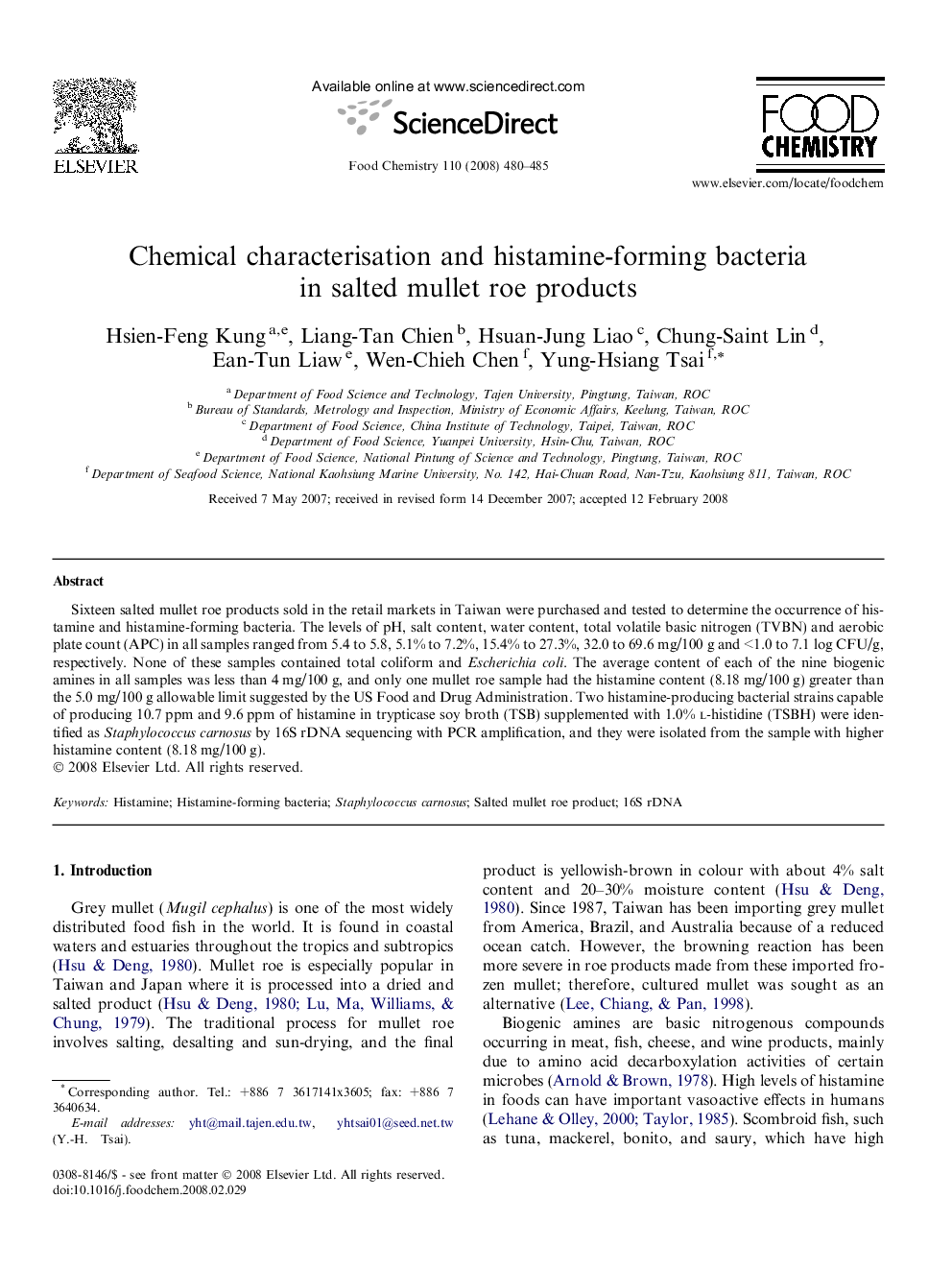| Article ID | Journal | Published Year | Pages | File Type |
|---|---|---|---|---|
| 1188549 | Food Chemistry | 2008 | 6 Pages |
Sixteen salted mullet roe products sold in the retail markets in Taiwan were purchased and tested to determine the occurrence of histamine and histamine-forming bacteria. The levels of pH, salt content, water content, total volatile basic nitrogen (TVBN) and aerobic plate count (APC) in all samples ranged from 5.4 to 5.8, 5.1% to 7.2%, 15.4% to 27.3%, 32.0 to 69.6 mg/100 g and <1.0 to 7.1 log CFU/g, respectively. None of these samples contained total coliform and Escherichia coli. The average content of each of the nine biogenic amines in all samples was less than 4 mg/100 g, and only one mullet roe sample had the histamine content (8.18 mg/100 g) greater than the 5.0 mg/100 g allowable limit suggested by the US Food and Drug Administration. Two histamine-producing bacterial strains capable of producing 10.7 ppm and 9.6 ppm of histamine in trypticase soy broth (TSB) supplemented with 1.0% l-histidine (TSBH) were identified as Staphylococcus carnosus by 16S rDNA sequencing with PCR amplification, and they were isolated from the sample with higher histamine content (8.18 mg/100 g).
